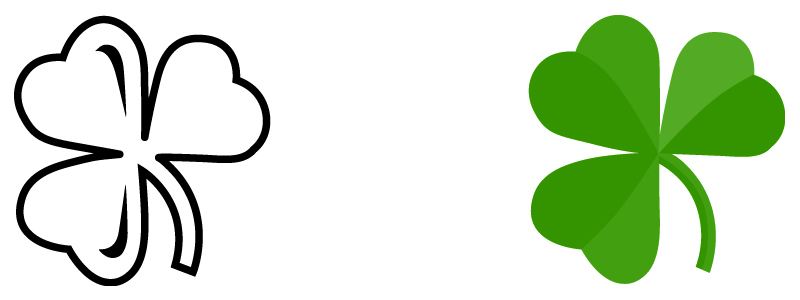As I write this, there are 13 days, 9 hours, and 8 minutes until St. Patrick’s Day.
As you can discern, I’m looking forward to celebrating St. Patrick’s Day —and all its shamrocky goodness— with my wife Lisa, as we always do.
Much has already been written about the shamrock as a symbol, as it is one of the oldest Celtic symbols. Perhaps second only to the harp in its rank as a symbol of Ireland, it has come to represent nearly all things Irish. As such, it can be seen in many logos (see Logo’ the Irish), including that of the Irish Tourism Board. In fact, the shamrock, along with the harp, is a registered trademark of the Republic of Ireland. It has, of course, also come to be regarded as a symbol of good luck or a St Patrick’s Day decoration.
Many cultures throughout time have held a special reverence for the shamrock, a representation of the number 3, which many religions viewed as sacred. To the Druids it symbolized the earth, sky, and sea. Christians, particularly Irish Catholics, have viewed its three lobes as a representation of the Holy Trinity. To others throughout the ages it has represented past, present, and future.
If you found this page because you were just looking for a simple shamrock image (and you still read this far!), here’s a shamrock drawing (both black & white and color versions) –you’re welcome to use it, alter, it, or whatever you wish. You can download the vector file (.eps) containing both versions, or a right click here to grab a 300 dpi jpg of the image.

Want more info on the history of the Shamrock? Check out this Wikipedia page.
There’s a dear little plant that grows in our Isle.
‘Twas Saint Patrick himself sure that set it.
And the sun on his labor with pleasure did smile.
And a tear from his eyes often wet it.
It shines thro’ the bog, thro’ the brake, and the mireland,
And it’s called the dear little Shamrock of Ireland.
Sláinte,
Rob


[…] the Irish As a follow-up to my most recent post on the symbolism of shamrocks, I’ve assembled a collection of logos that incorporate the shamrock* in some way. While this […]